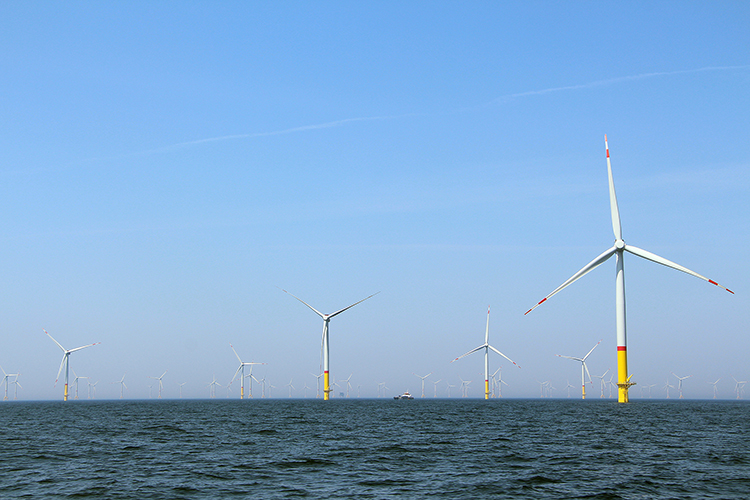The publication of the Federal Maritime and Hydrographic Agency's area development plan is accompanied by an almost fourfold increase in the area originally envisaged. The task now is to realise projects quickly and as innovatively as possible.
The production of green hydrogen is still in its infancy. Nevertheless, the political considerations on the tendering process so far are moving in the direction of price competition. The importance of offshore electrolysis for the realisation of the German government's target of 10 gigawatts (GW) of electrolysis capacity by 2030 is obvious. A great deal of energy can be provided offshore for electrolysis from wind.
"We welcome an early start to the award of the SEN-1 site for the production of green hydrogen at sea for a specific offshore hydrogen expansion target in the German EEZ as well as for the rapid market ramp-up of the green hydrogen economy in Germany," says Heike Winkler, Managing Director of the industry association WAB e.V. The focus of the sites to be awarded now should be on innovation potential and system serviceability as well as the involvement of small and medium-sized enterprises (SMEs). In any case, the bids should not only be evaluated in monetary terms. The likelihood of realisation of the projects described in the bids should be included in the evaluation as a matter of urgency. On the one hand, this refers to the proof of the ability to deliver the relevant components, but also to the compatibility with the essential nature conservation aspects and the performance of the bidder or bidding consortium. With the REPower EU programme, the EU Commission envisages producing at least 10 million tonnes of green hydrogen in the EU by 2030.
"With regard to the continuation of the National Hydrogen Strategy (NWS) and all related legal and regulatory frameworks, we call for the enabling of business models for the domestic production of green hydrogen from offshore wind energy. With practical project experience, the export potential can be tapped and the necessary quantities of green hydrogen can be made available for the decarbonisation of industry and the maritime energy transition, Winkler elaborates.
If an investment in the production of green hydrogen is secured, for example through contracts for difference or a fixed purchase price, the ramp-up could occur at the necessary speed for a technology that politicians in particular hope will reduce energy dependence on natural gas, for example.
The tendering of partial areas promotes the technological further development of the production of green hydrogen and companies can gather different empirical values from smaller projects. Heike Winkler summarises the next steps as follows: "We need and demand an innovation-promoting character for the first tender of the other energy production areas. Domestic production should not start with high price pressure". The use of coastal sites or sites with test field character beyond the scope of SEN-1 is also a possible alternative, he says, precisely because they bring with them a test field character and could help reduce development costs.
A politically imposed pipeline for the use of third parties would be another hurdle for companies that want to participate in the tender. At this point, the industry would like to see collection pipelines with defined transfer points that are strategically planned and also take planned imports into account. These should also be planned transnationally between neighbouring countries on the North Sea and Baltic Sea so that the area now being tendered can also be connected. With a growth of the offshore wind supply chain also for green hydrogen, there is immense potential for value creation, including long-term and future-oriented employment prospects, for Germany as an industrial location, in addition to the necessary climate protection. For the tendering of the annual 500 megawatts of offshore electrolysis from 2023, the development of a competitive market design for offshore wind hydrogen is a necessary step. The coalition agreement announced the consideration of the introduction of Carbon Contracts for Difference (CCfD or Contracts for Difference CfD). "We are sure that another quickly realised open dialogue can lead to a funding framework that brings the hydrogen economy offshore forward, not only in Germany, says the joint statement of the associations.
About WAB e.V.
WAB, based in Bremerhaven, is the nationwide contact for the offshore wind industry, the onshore network in the Northwest and promotes the production of "green" hydrogen from wind power. Around 250 smaller and larger companies as well as institutes from all areas of the wind industry, the maritime industry and research belong to the association.
Pic:
Baltic Sea©WAB
Press Contact
WAB e.V.
Thorsten Preis
Tel. 0173 238 28 02
thorsten.preis@wab.net
Green hydrogen: urgently needed for the energy transition on land and at sea!
